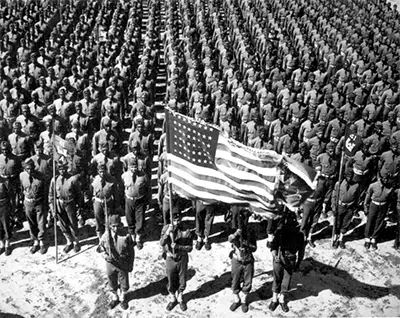Hello! Welcome to another blog of American foreign policy through the ages!! Super exciting right? In this post, you shall read about America’s relations with other nations during and after the GREAT war, also known as the first of two world wars.
As you know, the United States remained in isolation for the majority of its early history. Opening up to foreign policy more during the presidency of Teddy Roosevelt and the Panama canal. But the United States faded back into its prior stance on isolationism when World War I came around. President Woodrow Wilson urged the nation not to become “emotionally or ideologically involved in the conflict”, and the rest of the country was perfectly fine with that. So for the first chunk of the war, America remained neutral.
American neutrality actually is a large reason as to why Wilson got reelected in 1916, with the popular slogan “he kept us out of war”.

But this slogan soon became false in April of 1917 when Wilson asked Congress to give the ‘okay’ to enter the war in order to make sure the world was “safe for democracy”. War was officially declared by the United States Congress on April 6, 1917. Even after entering the war, America remained semi-neutral, not “officially” joining the allied powers yet still fighting WITH Great Britain and France against the Central Powers.
Similar to regretting getting that “super cute tattoo” of an infinity sign with your boo’s name on it (no hate to those who do have it! You look great girl!), the United States began to question if entering the war was a mistake (it was). American citizens faced the backlash of the emotional and economical costs of the war. The war FINALLY ended on November 11, 1918.
Following the end of the war, the League of Nations was formed in 1920. This international organization was created to be a safeguard “help ensure a global ‘permanent peace”

Sources:
https://online.norwich.edu/academic-programs/resources/isolationism-and-us-foreign-policy-after-world-war-i
First Photo: https://www.historyforkids.net/america-in-world-war-1.html
Second Photo: https://commons.wikimedia.org/wiki/File:Flag_of_the_League_of_Nations_(1939–1941).svg
I always felt like schools taught more about World War II more than World War I. I don’t really recall hearing much about it until freshman year of high school. The concept of America’s neutrality during war is quite foreign to me, and honestly our entire generation, as most of us have not been alive in a time that the US was not involved in some war overseas. Now it sometimes seems like the US is more focused on foreign involvement than solving the issues that are present in the country, such as the current pandemic. It is very interesting to think about a time where the government thought much differently on foreign policy.
There are so many huge decisions that our leaders must make. Hopefully, they always strive to keep the American people’s opinions and stances in mind; however, it often ultimately comes down to the leaders’ final call. While some of the huge decisions affect human lives through economical policies; others more clearly impact human lives—like the decision to go to war.
This would be a very hard decision to make, and I do not envy the individual who is tasked with making that final call for war. No matter the outcome, whether the country later suffers economical hardship or ends up prospering, there are still large numbers of human lives that are sacrificed by entering war.
I am sure that self-doubt and regret would fill anyone who had made that decision. War is painful, and it can be hard to know when it is the right choice. All one can hope is that our leaders do what they think is in agreement with the people’s best interests.